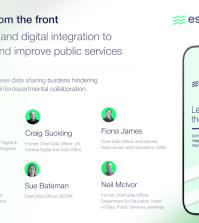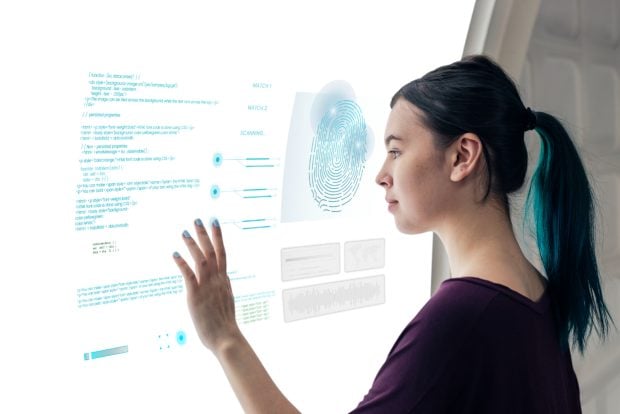Data scientists out of the basement and in front of decision-makers

For the analytics and insights from the data science department to really make a difference, we must bring them closer to leadership
Where do your data scientists sit? Perhaps they occupy a typically gloomy, computer-filled basement. Or maybe they have a glassy building all to themselves. Either way, you’ll not always see them walking in the same corridors as decision-makers. After all, analytics is best left to the experts, isn’t it?
Yet managers can spend time puzzling over the statistics and insights they ordered from the data scientists that make little sense. How can they turn this into useful insights for service design and delivery? The truth is that where data scientists sit in your organisation is vital – strategically, as well as physically. When they’re separated from decision makers, data analytics won’t line up very easily with organisational goals.
But data professionals should influence the entire organisation as catalysts for positive change. I recently had the chance to speak with SAS collaborators Jen Stirrup and Neil Cattermull about optimising the role of the data scientist in businesses, but there is plenty of insights for policy-makers too.
One analytics strategy for all to participate in
Data is nothing without strategy. While many decision makers stress the importance of data, Jen Stirrup pointed out that often this appears to be a case of “data FOMO.” Leaders fear missing out on the potential insights their data has to offer, but in reality, have no idea what insights they’re looking for.
For all analytics use cases, there needs to be a clear understanding first of exactly what the problem is that you’re trying to tackle – and how analytics can help. Only then can you use the relevant data and create, refine and refresh the right models. And develop models that lead to key insights to help resolve the problem.
Democratising analytics
Analytics is for all, as we become more data-driven and analytical in our thinking and our work. But it’s not up to each department to shake the data hard enough and get results. Departments must strategically democratise analytics, turning the data into insights that are valuable to all who could benefit from them.
This means starting with the right high-quality data sets, selected in collaboration with decision-makers. Next, model design and deployment should prioritise the achievement of the agreed goals. Finally, data professionals should present the findings comprehensibly. This means using visual analytics or simple interfaces tailored for those who need to understand the information and act upon it.
Speed is of the essence in analytics, and yet so many projects become a “poisoned chalice,” as Neil Cattermull stated: passed down through teams and taking years to complete. Organisations can speed this up through collaboration at every stage. Take the furlough scheme. Desperately needed to preserve jobs and businesses through COVID-19, the efficient collaboration of hundreds of policymakers, data scientists and employers helped reverse the tax system within three to four weeks, saving countless jobs.
We are all data scientists
As data becomes more and more pivotal, it shouldn’t be left up to the tech experts to advocate its value. Asking data scientists to take on a business analyst type of role is only half the solution. The other route to truly data-driven success is to nurture the evolution of new analyst roles outside of the data science department. These could include:
Citizen data scientists. While working in their own fields – say, procurement or customer service – citizen data scientists might create models that leverage analytics specifically for their own departments. They can rely on the strength of their contextual knowledge and wider understanding of business priorities to tailor the analytics process to produce insights that their teams can act on immediately.
Data translators. These professionals have a breadth of knowledge spanning technical data science and top-level organisational management. Hence, a data translator can turn insights into a more “business-friendly framework,” as Jen noted. As intermediaries between data scientists and decision makers, they guarantee a process that has impact at scale in the organisation. At the same time, data translators are by default teaching and nurturing each group to think more collaboratively.
Data-literate employees across the business. A sensitivity for the raw data generated from customers or operations isn’t just for analysts. It has the potential to revolutionise thinking in all departments and among all staff members. Making this organisational shift to data literacy is arguably one of the greatest drivers of reliable growth that businesses can commit to today.
What place does data science have in the future?
The role of the data scientist is beginning to change. Ultimately, coding could become a smaller part of what data scientists do as models become more interface-based. Data scientists will soon be working to fit machine scale data into existing models and interpreting the results. They will become responsible for the wider process of managing the insights. And they’ll be constantly reviewing what they mean for the end user.
In leadership, data scientists are invaluable. As Neil pointed out, their knowledge of reference cases can provide the evidence for key decisions, informed by data insights. But data science can also have a huge impact on public perception. Organisational ethics is fast becoming a non-negotiable for customers. Sensitivity for how data science capacity can be leveraged worldwide helps organisations to use data for good, to make a difference on issues from deforestation to reducing injustice.
When organisations stick their data scientists in the engine room, they can’t influence navigation. By encouraging collaboration, skill sharing and a broadening of roles among data scientists and others, organisations can be confident of their bearings as they chart a way towards their goals.
About the author
Haidar Altaie joined SAS as a Data Scientist after graduating from University with a Mathematics and Statistics degree. He is passionate about enabling customers to understand the potential of Analytics, using AI/ML techniques across growing industries to enable customers to solve complex real-life issues. Contact [email protected]


















Hello,
I really enjoyed this article.
Great tips to thank you … keep updating